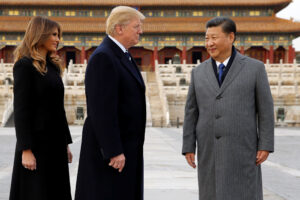By now, the myth of Russian invincibility is wearing thin—and not just on the battlefields of Ukraine. What we’re witnessing is something deeper, more volatile, and far more revealing: the unraveling of a regime that has spent over two decades building the illusion of control. And now, it’s being punctured—drone by drone, lie by lie.
In recent days, the façade of Russian stability has begun to collapse in real time. Airports in major cities like Moscow and St. Petersburg are grinding to a halt. Hundreds of flights canceled, thousands of passengers stranded on terminal floors, food running out, tempers flaring. These aren’t minor disruptions—they’re symbols. Symbols of a regime scrambling to project calm while the ground beneath it shakes.
The Kremlin’s response has been almost painfully predictable: censorship, scapegoats, and more censorship. But what’s changed is the scale. Entire regions of Russia—69 of them, to be exact—have reportedly been hit with internet outages. In some cases, mobile data was cut off under the absurd pretense of “drone defense exercises.” In Kamchatka, some 7,500 kilometers from Ukraine, authorities claimed they needed to disable the internet to prepare for aerial threats. Really?
No one’s buying it.
And that’s the real story here. The people of Russia, long used to filtering state propaganda through a lens of cynicism, are watching the machinery of the state sputter in the open. Telegram channels flooded with images of chaos at airports, angry passengers, shuttered terminals. WhatsApp going dark. A digital blackout, not in some restive borderland, but across the entire federation.
It’s not just embarrassing. It’s existential.
Even Putin’s loyalists are getting a taste of the regime’s desperation. The recent arrest of Konstantin Stru—one of Russia’s wealthiest oligarchs and a long-time Putin supporter—was a message delivered with surgical brutality. Stru, who controlled Russia’s third-largest gold producer and sat in the Duma as part of the ruling party, was pulled from his private jet and detained. His company is now on the verge of being fully nationalized.
This wasn’t about justice. It was a warning.
In a regime that thrives on loyalty, even former allies are dispensable. As the walls close in, Putin seems more concerned with consolidating power than with protecting the people. Ministers are sacked without explanation—like the now-former Transport Minister, Roman Tovoid, allegedly fired as a fall guy for the aviation disaster. Meanwhile, state media blames “temporary interference” for the mass cancellations, as if hundreds of stranded flights and angry Telegram posts can be waved away with bureaucratic euphemisms.
But what’s more alarming is what these actions reveal about the state of the regime. The drone strikes launched by Ukraine have evolved well beyond symbolic acts—they’re forcing real, tangible fractures in Russia’s governing structures. Ukraine isn’t just targeting military outposts; it’s striking deep into the logistical, economic, and psychological core of the country.
And the ripple effects are brutal. Disrupted airports mean delayed cargo, spoiled food, missing spare parts. A few days of chaos, and suddenly factories grind to a halt, military supply chains falter, inflation bites harder. The economic blowback is severe—Russian aviation officials estimate losses exceeding $250 million just in recent days.
What’s troubling is how little the Kremlin can do to stop it.
Even Soviet-style tactics—shutting down communications, punishing internal dissent, manufacturing scapegoats—aren’t working as they used to. People today have smartphones, VPNs, alternative media. And more importantly, they have eyes. They can see the disorder around them, hear the drones overhead, watch the regime react not with strength, but with fear.
There’s a term political scientists often use to describe the last phase of authoritarian collapse: cannibalization. That’s when institutions once meant to protect the regime begin feeding on each other. Intelligence services turning on the military. Oligarchs stripped of their fortunes. Ministers discarded like sandbags from a sinking balloon.
Russia is entering that phase now.
Of course, none of this guarantees a swift or clean end to Putin’s rule. Autocracies often stagger on longer than anyone expects. But what we’re seeing is a regime no longer capable of hiding its weaknesses, let alone correcting them. Ukraine’s drone campaign has done more than destroy infrastructure—it has destroyed the illusion that the Kremlin can keep its own house in order.
And once that illusion is gone, what’s left?
Putin may still control the narrative on state television, but control is not the same as command. When a regime has to shut down the internet to stop people from seeing reality, it’s no longer leading—it’s running.
And the direction? Steadily downward.



